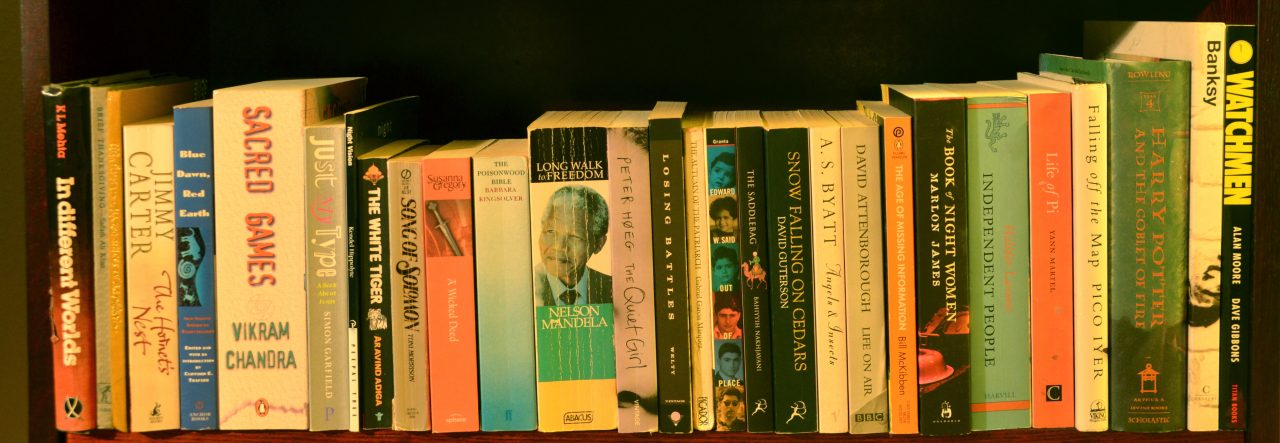Translated from Italian by Ann Goldstein
Published by Thorndike Press, 2016, 497 pages. Original version published in 2011.
Elena Ferrante has become a literary sensation in the Anglophone world with The Neopolitan Quartet, books about a friendship between two women. The books not only chart the story of Elena and Lila’s friendship over several decades but also that of Italy. My Brilliant Friend, the first of the series, is set in the 1950s in a poor neighbourhood in Naples where the girls grow up.
The book starts in the present, with Lila’s son calling Elena to say his mother had disappeared, leaving nothing behind. She had taken all her personal things and cut herself out of photographs. Elena realizes that Lila has done what she always threatened, to vanish without a trace. Furious at Lila and determined not to let her go, Elena starts putting down everything she can remember of their friendship.
As a child, Elena was fascinated by Lila and her lack of fear, her brilliance and refusal to be bullied. The first scene from their childhood has Elena, in spite of herself, following Lila up the stairs to the home of Don Achille, “the ogre of fairy tales”, a man Elena wasn’t even supposed to think about, never mind ring his doorbell. But Lila had flung Elena’s doll through the grating of Don Achille’s basement, and had decided they would try to get it back.
In a couple of pages, Ferrante captured the essence of the girls. They both have an intelligence that set them apart from the other children. They are opposites in many ways. Lila is brilliant—she taught herself to read at three—while Elena has to work hard at school. Unlike Elena, who is the gentler one, Lila is quick to fight any insult. But they are both determined to get out of their neighbourhood. They dream of becoming well-known writers and making lots of money, money being the surest way to break through the limits that life had imposed on them.
But the girls’ future is dictated by family circumstances. Elena’s father agrees to pay for her to go to middle school, while Lila’s parents refuse. Children were expected to start working to help the family as soon as they could, so Lila starts working in her father’s shoe shop. Her brother has ambitions for the shop, and decides to start producing handmade shoes instead of merely repairing them, using Lila’s designs. But the project doesn’t succeed, and Lila’s one outlet is taken away from her. The book ends with Lila’s wedding, and the reader is left with a feeling that the “terrible, dazzling girl” is trapped within the confines of her life. Unlike Elena, who found a way out by going to university.
This is very much a book about women. Not just the two girls, but the other women in the neighbourhood: Elena’s mother with her anger against the world, the widow who falls in love with a married man and has a breakdown when he leaves—they are so clearly drawn you feel you know them. The men, on the other hand, with a few exceptions, seem to meld into each other. I found myself going back to the list of characters at the beginning of the book for help in keeping them apart.
The book paints a vivid picture of the Neapolitan neighbourhood—the anger, the lack of opportunities and of expectations. Beating children and wives was commonplace, and feuds between families were fierce. The friendship between Elena and Lila, although volatile and competitive, is the bright thread that runs through the book. I’m looking forward to reading the other three books and spending more time in the company of these interesting, complex women.


The wedding feast at the end of My Brilliant Friend is one of my “top ten memorable meals in literature.”The gentle collapse of goodwill and appearances as some guests realize their food is less good than others’ allowing also the worries about how many have (over-)indebted themselves for the event to surface.
I loved the book–it was so beautifully written.
Pingback: Em and the Big Hoom: Jerry Pinto | Talking About Books
Pingback: Best books of 2017 | Talking About Books
Pingback: The Neapolitan Novels: Elena Ferrante – Talking About Books